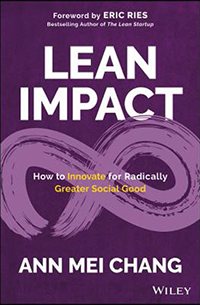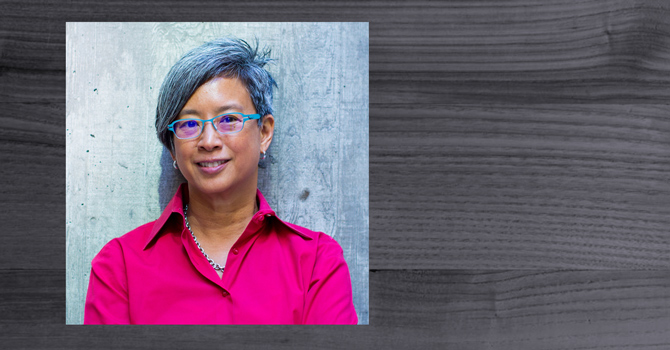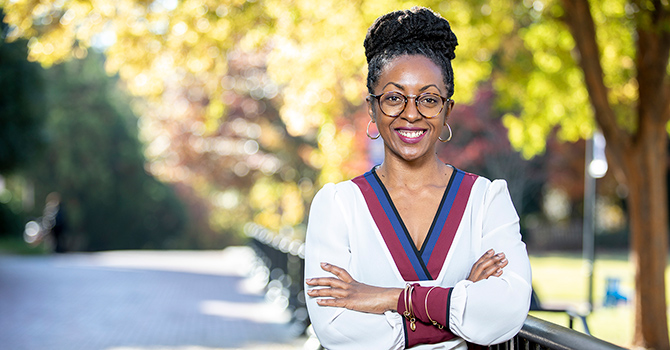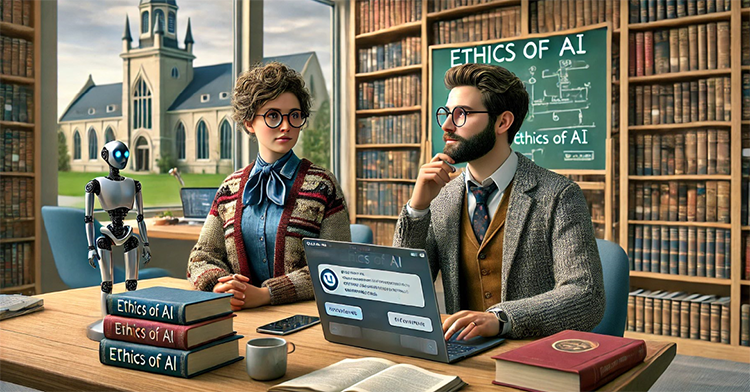Ann Mei Chang looks at doing social good as an engineer. The point is not to have warm-and-fuzzy personal experiences but rather to do the most possible good -- in tech-speak, to maximize impact.
“I come at social good in a very different way than I think most people do,” she said.
Before she became a leading advocate for social innovation, Chang aggregated more than 20 years’ experience in Silicon Valley at companies such as Apple, Intuit and Google, where she served as senior engineering director.
She made a midcareer shift to the government and nonprofit sectors, serving as chief innovation officer at USAID and Mercy Corps, among other positions.
Chang is the author of “Lean Impact: How to Innovate for Radically Greater Social Good,” which seeks to apply some of the lessons from the fast-moving tech sector to social innovation. The book builds on the work of Eric Ries, who wrote “The Lean Startup.”
 From her experience and research, Chang distilled three core principles: think big, start small and relentlessly seek impact.
From her experience and research, Chang distilled three core principles: think big, start small and relentlessly seek impact.
She spoke to Faith & Leadership while at Duke as a guest of the Center for the Advancement of Social Entrepreneurship (CASE) at the Fuqua School of Business. The following is an edited transcript.
Q: Talk a little about your career path. Why did you change careers?
I spent the first 20-plus years of my career in the tech world in Silicon Valley. I worked at big companies like Google and Apple, as well as startup companies.
In my mid-20s, I had made a decision that I wanted to spend the first half of my career in tech and the second half of my career doing something that was more meaningful. While tech was very fun and it was challenging, it wasn’t meaningful to me, and I knew I wanted to do more.
I tried to volunteer on the side while I was working, but there’s only so much you can do that way.
When I first made that decision, I didn’t decide what I was going to go work on. I knew it was 20 years off still, so I didn’t want to make a decision prematurely. But as it got closer and I started looking at the problems in the world that I cared about, I felt like global poverty was really at the root of many of those things, so I decided to focus on global poverty.
I went from Google to the State Department. It was a pretty dramatic shift. I knew I had a lot to learn, because it was a very different world I was getting into. I thought of my couple of years at the State Department in this fellowship program as my custom master’s in public policy.
Q: So is there anything in your background that oriented you toward this?
I think it’s just the engineer in me. I come at social good in a very different way than I think most people do. Most people end up having a passion for a particular issue area or geography or whatever because they have a personal experience with people that they know and love or meet.
For me, that was never the case. The thing that I’ve been really interested in when it comes to social good is thinking as an engineer at the systems level. The reason I wrote the book is to try to figure out how to help everyone who’s doing good dramatically increase the good that they can do.
It’s really changing the way we go about delivering good.
Q: How do you approach the question of pace and change and how to make change within those institutions?
Silicon Valley is probably the fastest-moving industry on the planet, and it’s highly competitive. It’s part of the ethos there, and I think it’s part of why it’s driven such disproportionate impact in the world.
When I went from Silicon Valley into global development, one of the things I noticed is that the pace of progress was just so much slower. A lot of folks were still doing things that they were doing five or 10 or 20 years ago because it worked, and it did some good.
They kept doing it because they wanted to do good, and it does some good, and so they keep doing it. And it’s not a bad thing, but there’s so much more we could do.
I believe the way that we get to doing more is that we have to really accelerate the pace of progress. It’s not easy. Partly, it’s systemic, how the systems and institutions operate, what the processes are and so forth.
Partly, it’s cultural. I think even when those systemic constraints don’t exist, culture is holding us back, because we get into ruts of how things have always worked, and we continue to work that way.
Q: Your book is intended as a practical guide, right? What are the key points?
“Lean Impact” has both real tools and techniques for how to go about doing stuff and also a lot of detailed examples that show how organizations have done this. I interviewed over 200 organizations, big and small, around the world -- for-profit, nonprofit -- to look at what caused the most successful ones to stand out.
I distilled down three core principles: think big, start small and relentlessly seek impact.
None of this is stuff I came up with. It’s basic things that we would all think made sense but that are hard to do in this world.
We tend to plan based on constraints. We look at how much money we have, how many people we have, what the size and scope of a grant proposal we’re making is, and we go, “What can we do with this?”
And the result is that we usually do some good, but it’s a tiny, tiny fraction of what’s needed in the world, because we’re looking at the constraints of our resources and doing what we can.
So the first mindset shift is to plan relative to the need in the world. What would moving the needle look like? What’s actually needed? That will force us to have a goal that we don’t know how to get to.
That’s where innovation comes. When you have a stretch goal that you don’t know how to achieve with what you have today, you have to start thinking out of the box. You have to start testing things. You have to start iterating stuff and start improving on what you’re doing to get to that goal.
Once you have that big, audacious goal, I think there’s a temptation then to start executing. We’re just going to deliver, deliver, deliver. And deliver, deliver, deliver works well if you are trying to solve a problem that’s well-understood and you have a solution that is sufficient, right?
Then you can operate like a utility company might and predictably deliver on what it is that you have to offer. You want electricity to run every day, 24 hours a day.
But in the problems that we’re trying to solve, whether domestic or international, they’re generally problems that are highly complex, highly dynamic, and where the interventions we have are nowhere near sufficient. When that’s the case, I think we need to look at a different approach.
Predictable delivery is not going to get us there. We can execute perfectly and we still won’t solve the problem.
Q: So why start small?
Rather than predictable execution, what we need to focus on is learning as fast as we can. And you can learn much more quickly and adapt much more quickly if you start small. You can move more quickly. You can be more attentive to the effects of what you’re doing.
By starting small, we can refine and we can learn more quickly. We can come up with solutions that really can make a bigger difference and get to more people.
Q: And what’s the last part?
“Relentlessly seek impact” is how do you get from point A to point B. It seems obvious that if we’re mission-driven, we should be trying to get to that massive impact.
But sometimes we get enamored with some new technology, and we’re trying to find a way to apply some technology to our problem rather than looking at what’s really needed.
Sometimes it’s because we’re wedded to our own institution, that we want our institution to play a role -- to raise money or to get recognized or whatever -- and we need to play a different role as an institution in order to make a bigger difference.
Sometimes it’s just that we get wedded to our solution. We have something that we’ve seen work with some people and make a difference, and so we get really passionate and emotionally attached to that solution. Or we have pride of ownership because we came up with this thing.
I use an example in the book: there’s a friend of mine who started a social enterprise to help women in a particular community in India learn to make crafts and then to sell those crafts in high-end shops in the U.S.
And she set this up as a little social enterprise, and she’s running it herself, and she goes out and talks to the women and tries to get them to make these crafts, and then she talks to the shops and tries to get them to sell them.
And I asked her, “There are a lot of organizations that are doing this and have catalogs set up, that have supply chains set up, that have distribution networks set up. Why don’t you just plug these women into those networks? Or why don’t you help get more distributors for this network and have the economies of scale?”
And she said, basically, that she likes doing this. It’s something that’s personally satisfying to her. So part of if we want to make a bigger impact is that we have to sublimate our own personal fulfillment to the greater good.
Q: What are the questions people might ask themselves about their own institutions?
From a social impact standpoint, I think that we need to raise the bar, thinking about, “Are we maximizing the social good that we do?”
Just like you would, as a company, think about maximizing profit -- there are tools and metrics that let you see if you’re maximizing shareholder value. I think we need to hold ourselves to the same standard when it comes to maximizing impact.
We need to, one, get the data to understand how well are we doing. Are we getting the bang for buck that we’re seeking? Is that state-of-the-art? Are we doing better than our “competitors,” if you will -- than all the other alternatives out there? If not, should we just give our money to them?
Let’s measure for each dollar we’re spending how much good -- of whatever nature we’re trying to seek -- are we receiving. The book really talks about some of the tools to optimize for that.
Q: When you’re in that middle step of starting small, how do you know when you need to keep moving bigger?
I think it’s a matter of simple math. Let me give you an example of an organization that I talk about in the book and just give you a sense of how they made these decisions. There’s a social enterprise called VisionSpring, and they decided to focus on a 700-year-old invention that has been proven to improve productivity and learning potential. That’s eyeglasses. Not a new invention, not whiz-bang, but incredibly transformative for people who need it.
Their estimates are that 2.5 billion people could benefit from eyeglasses that don’t have them. So they started out as most nonprofits would, in two geographies -- El Salvador and India. Recruited a bunch of people they called “vision entrepreneurs” to go do outreach into rural areas and get people eyeglasses.
And they came back with great stories, right, like people who were blind being able to see, who thought they were blind being able to see, people who couldn’t work anymore being able to work again, kids who can now learn. These are the stories that we all do this work for.
And yet they thought, “This isn’t enough. We are losing money for every person we reach. We’re never going to be able to raise enough money to get to the people we need. We need to do more.”
Their first pivot was that they created vision centers in more urban areas that would take the profits from serving more affluent customers and use that to cross-subsidize outreach to more rural areas. Through this, they became financially self-sustainable, which is a huge success for most nonprofits.
But they also recognized it wasn’t enough, because it would have taken them decades to expand to get to the 2.5 billion people around the world.
So they decided to pivot again. They decided to work through partnerships instead, and they partnered with an organization in Bangladesh called BRAC that has a network of community health care workers across the country.
With BRAC, they’re now up to over 4.5 million [pairs of glasses distributed]. And most nonprofits would think, “Hey, that’s pretty good success. I’m financially self-sustainable. I’m getting to 4.5 million people.”
That’s a big number, but 4.5 million is tiny relative to 2.5 billion.
So their most recent pivot is that they recognized that the reason that these people don’t have glasses is because there are market and policy failures. Eyeglass manufacturers are not investing in making lower-cost eyewear, and they’re not incentivized to distribute to more rural areas. Governments are not including vision care in the ways that they take care of their citizens.
And so they brought together a public-private partnership called the EYElliance that’s focused on collective action to address these issues, bringing together eyeglass manufacturers and governments and nonprofits.
VisionSpring itself is not a big organization. They’re not growing, necessarily, but their impact is really growing and magnifying over time.
It’s really trying to take yourself out of the equation and keeping your eye on what the impact is and just adding up the numbers.











